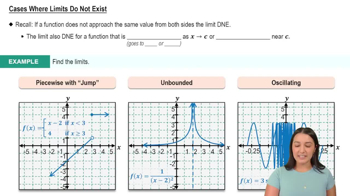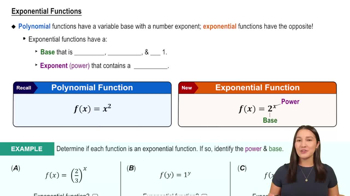Theory and Examples
Once you know limx→a+ f(x) and limx→a− f(x) at an interior point of the domain of f, do you then know limx→a f(x)? Give reasons for your answer.
 Verified step by step guidance
Verified step by step guidance Verified video answer for a similar problem:
Verified video answer for a similar problem:



 6:47m
6:47mMaster Finding Limits Numerically and Graphically with a bite sized video explanation from Patrick
Start learning